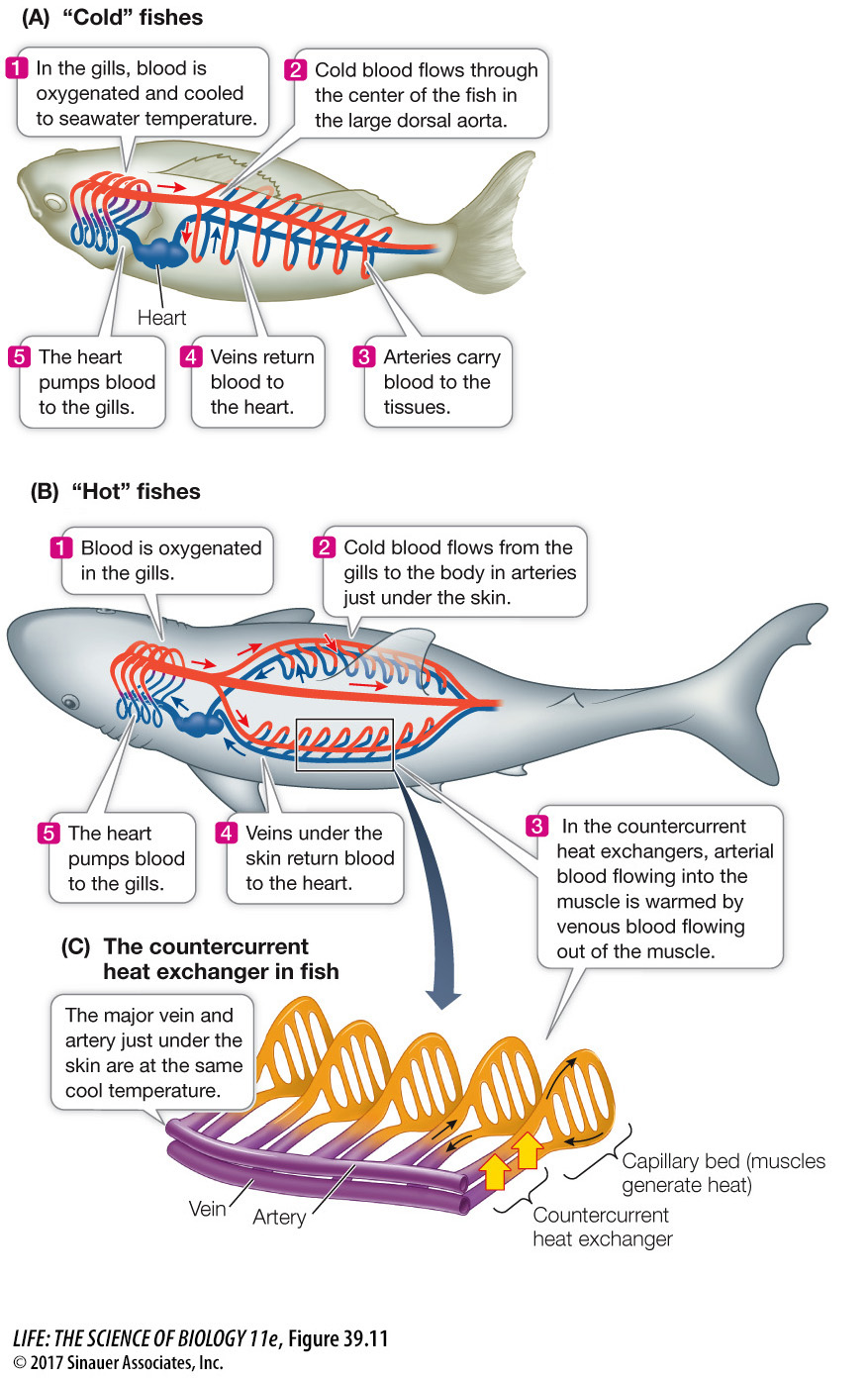Some fishes conserve metabolic heat
The muscles of active fishes produce substantial amounts of metabolic heat, but most fishes cannot retain that heat. Blood pumped from the fish heart goes directly to the gills, where it comes very close to the surrounding water to exchange oxygen and carbon dioxide. Any heat the blood picks up from metabolically active muscles is lost to the water flowing across its gills. It is therefore surprising that some large, rapidly swimming fishes, such as giant bluefin tuna (see Figure 1.15A) and great white sharks, can maintain swimming muscle temperatures 10°C–
In the typical (“cold”) fish circulatory system, oxygenated blood from the gills collects in a large blood vessel, the aorta, that runs through the center of the fish, distributing blood to all organs and muscles (Figure 39.11A). “Hot” fishes have a small aorta, and most of their oxygenated blood is transported in large side vessels just under the skin (Figure 39.11B). The cold blood leaving the gills is therefore kept close to the surface of the "hot" fishes as it flows posteriorly to the swimming muscles. The cold blood flows into the muscle mass through small vessels branching off the large side vessels. These many small vessels run parallel to the vessels carrying warm blood from the swimming muscles back toward the heart. Because the vessels carrying the cold blood into the muscles are in close contact with the vessels carrying warm blood out of the muscles, heat flows from the warm to the cold blood by conduction. Therefore the heat produced by the active muscles is retained in the muscle mass.

Because heat is exchanged between blood vessels carrying blood in opposite directions, this adaptation is called countercurrent heat exchange (Figure 39.11C). By keeping heat within the muscles, these fishes can maintain an internal body temperature considerably higher than the water temperature. Each 10°C rise in muscle temperature increases the fish’s power output almost threefold, giving it a faster and more powerful swimming capability.